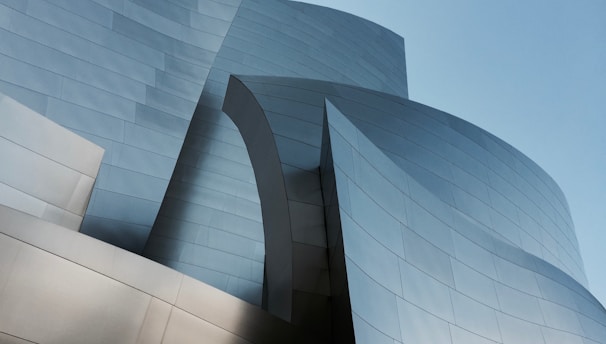#25 Dickson's land and Milton Carpenter's Black Smith and mortuary
Services and history
#25 - Carpenter’s Hardware/Blacksmith Shop/Livery Stables/Mortuary – 235-275 North First Street (388)
Circa 1901 on the corner of C Street and First you will pass by the location of the former Blacksmith shop and livery stables.
A pioneer and successful in their line of business in Dixon is Milton Carpenter, who was born November 8, 1836, in Niles, Michigan. He is the son of John Whipple Carpenter, who moved with his family to Missouri when Milton was a child. In Missouri, he was reared and educated in the public schools and at the age of fourteen began preparation for a business career by becoming an apprentice in the wheelwright’s trade. His training was obtained under his father, who was an experienced carriage maker and a man well known in that section of Missouri.
After becoming proficient at his trade Milton Carpenter continued to follow it until 1855, when he determined to come to the Golden State, and the same year found him crossing the plains with ox-teams. Arriving safely in Sacramento, he soon afterward set out for Napa County and was fortunate in soon finding work in his trade. A later move brought him to Solano County, and locating in Silveyville, he ventured into an enterprise of his own, establishing a blacksmith and carriage shop. A later venture was the establishment of another branch to the business, namely undertaking, this being the first regularly established business of its kind in northern Solano County. When the Southern Pacific Railroad was completed and Dixon was founded, he with other citizens moved his business over to the new town, which had a rapid growth and was soon classed among the established towns of the state. With the growth of the town Mr. Carpenter’s business expanded in like ratio and he was compelled to enlarge his quarters to accommodate his patrons. As the years passed, he built up a large business in the manufacture of carriages, wagons and implements, his patronage covering a wide radius in Solano and Yolo counties. Strict attention to details and a thorough understanding of his varied lines of business, coupled with a kindly manner, may be said to be the keynote of the success of the large business, which was ultimately his, and which he continued to manage up to the time of his death, March 1, 1901.
Milton Carpenter Blacksmith, Machine Shop and Garage provided service to Dixon residences for their automotive needs.




People and culture
Sunday, August 29, 1999
Rossi family steered Dixon for seven decades
by Kristin Delaplane
On almost every corner of every busy street it seems there is a gas station. But that wasn’t the case in the early years of this century, when “horseless carriages” began clattering over roadways. In fact, when Emil Rossi arrived in Dixon, he probably couldn’t see a station at all.
Born in Italy in 1888, Emil Rossi traveled to the United States when he was 16, eventually arriving in San Francisco.
In 1908, he answered an ad placed by Roy Mayes, a Dixon farmer seeking a mechanic. At the time, automobile mechanics were not easily found in Dixon.
“Mayes was also a racing car enthusiast,” said Emil Rossi’s son, Bud Rossi, “and he recruited my father to drive his cars.”
From there Emil Rossi went to work for Milton Carpenter, a Dixon livery stable owner and blacksmith who had expanded his business to include working on cars. A partnership was formed, and the business expanded to include a car agency, located in the livery stable.
“Then in about 1913 or ‘14, my father became partners with Clarence Frese,” continued Bud Rossi. “They built the downtown (Dixon) garage.” It was a tin structure.
In 1917, Frese was drafted to fight in World War I while Rossi, a family man, was not. Frese was killed in the war, and in 1919 Emil Rossi’s brother joined the business, which they renamed Rossi Brothers.
“The gas pumps were on Main Street,” recalled Bud Rossi, describing early Dixon. “The highway came into Dixon - Highway 40, which was the main U.S. cross-continental artery. There were 11 gas pumps at garages and in front of different stores.”
By the 1920s, many garages had sprung up to serve the traveling public and the town’s 800 to 1,000 residents. Besides Rossi Brothers, there was Marvin Garage, McGimsey Ford Garage, City Garage, Weigle Garage, a Standard station and D’Artenay’s Garage.
Many of these garages also were automobile dealerships. As such, the garage had two or three cars on their lot and would take orders from customers. The car would arrive within three to four weeks.
Marvin’s Garage had the Grand Page agency. McGimsey’s was a Ford Agency. The City Garage was a subagency for a Vacaville dealership that handled Buicks. Weigle’s had a Chevrolet agency, while D’Artenay had the Star Agency.
Over the years, Rossi Brothers handled several different car lines including Hanes and Rickenbacker, which was a premium car then.
“They ended up as a General Motors agency,” Bud Rossi explained. In 1927, the partners built a modern showroom next to the garage. In the ‘30s, they became an Oldsmobile dealership.
In 1939, Bud Rossi graduated from Davis and joined the family business, buying his uncle out. By then the business included a farm equipment dealership for Allis-Chalmers Farm Equipment, which they acquired in 1929. Most of the equipment was tilling- or harvesting-related.
“In the early part of the century, horses were replaced by tractors, which pretty much became the method of tilling in the Dixon area,” Bud Rossi explained. “It went from wheel tractors to crawler tractors. Crawler tractors were the main source of power in tilling, because they needed heavy horsepower to till deep into the soil, which when we went into irrigation you had to have deep penetration.”
In 1946, Emil Rossi passed away and Bud Rossi’s brother, Vincent, came into the business. By then, the mainstay of the operation was the farm equipment.
By 1964, in anticipation of developing a display center for the equipment, the brothers purchased the old Carpenter property where the livery stable had been. However, shortly after the purchase, it became clear the old garage was not going to be adequate for any increased business, so instead, on the historic Carpenter landmark, they built Dixon’s first mini mall, Rossi Mall. Today it is Archer Plaza.
In 1965, the two brothers handled the first mechanical tomato harvesters.
“We saw the evolution of the harvester,” Bud Rossi said, “That revolutionized the tomato industry. The first one employed 20 sorters on the machine. Then there was the advent of the electronic sorter, which separated the green and red fruit and the dirt.
“That eliminated the number of people needed to where today’s machine only has three or four people.”
Bud Rossi also saw the development of a new tomato to accommodate the machinery.
“Davis developed a tomato with a hard skin that could take the shaking and tumbling that the mechanical machines did. Also, they developed a plant where the all the tomatoes would mature at the same time.”
In 1973, the brothers let the Oldsmobile dealership go, deciding to handle farm equipment exclusively. In 1974, they built modern facility on 10 acres at North First Street. In 1985, after nearly a decade at the new facility, the brothers closed down when Allis-Chalmers went out of business.
Information for this article came from an oral history in the Dixon Public Library’s collection.


Esther Bryce
Founder / Interior designer


Lianne Wilson
Broker


Jaden Smith
Architect


Jessica Kim
Photographer
